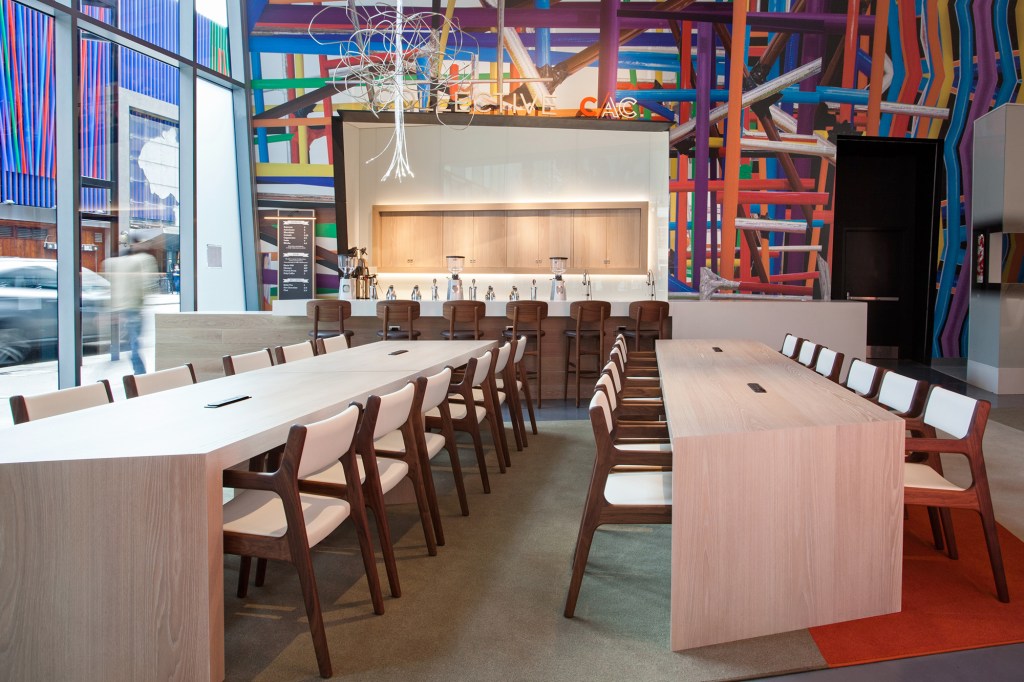The ground-floor Kaplan Hall Lobby, which Hadid conceived as an “urban carpet” that extends the street into the building, has been compromised by an inappropriate renovation and mismatched art installations that denature the original taut, disciplined, abstract design. This curatorial misdemeanor, unveiled in late March, was committed by the very staff entrusted with the stewardship of this museum of national architectural significance.
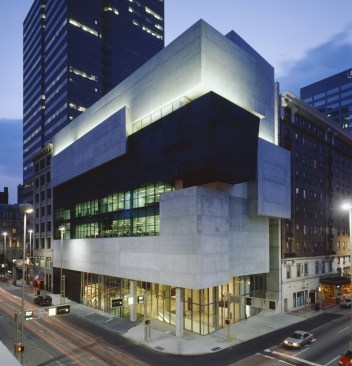
Roland Halbe
The exterior of the Rosenthal Center pre-lobby renovation
The intentions were good and valid: the Rosenthal Center undertook the $1.1 million upgrade to make the lobby more inviting, to entice passersby into the space. Jim Stapleton, AIA, a principle of FRCH Design Worldwide, which designed and coordinated the project pro bono, wrote to me in an email that the goal was to build on Hadid’s idea of the urban carpet: “Our mantra was ‘inside out and outside in’ … to bring in more of the outside street life into the lobby, while at the same time bringing more artistic life inside of the building to the outside. We were all big fans of the urban carpet idea, but its initial realization only took the concept so far.”
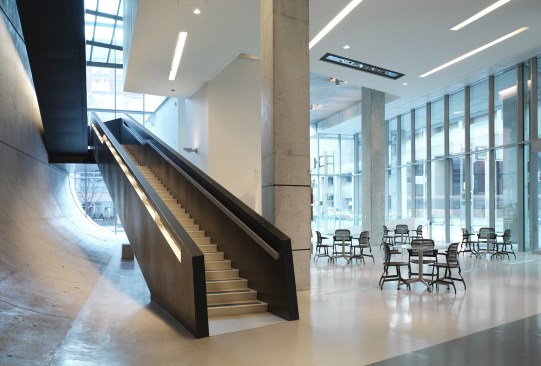
Courtesy FRCH
The lobby before the renovation
Originally, the Kaplan Hall Lobby featured only a streamlined reception desk and a bookstore; the rest of the space, which has plate-glass windows that line the sidewalk, remained under-furnished and underused, merely something to pass through on the way to the galleries upstairs. Last year, the museum’s administrators hired FRCH to design a bar and restaurant. A new front desk and jewelry case were put on wheels, for easy moving during events, and the retail cabinet under the stair was lifted off the ground, “to allow the energy of urban carpet to flow beneath it,” Stapleton wrote. Several columns were wrapped in lights to augment the ambient lighting.
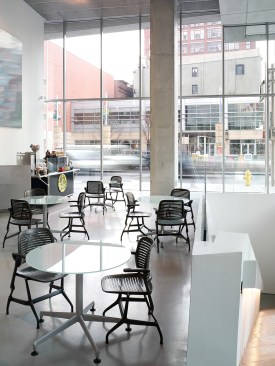
Brian Miller for Steelcase
The lobby, pre-renovation
The installation and reprogramming has indeed drawn more people into the lobby during the day, but the foot traffic comes at a price: The aesthetic failure compromises a visitor’s introduction to the building and the art beyond. A space with an extraordinary aura has become ordinary.

Courtesy FRCH
The renovated lobby and new store. Left back-wall mural by Vivid Astro Focus, right back-wall light installation by Erwin Redl, and column wrap by Vulkane.
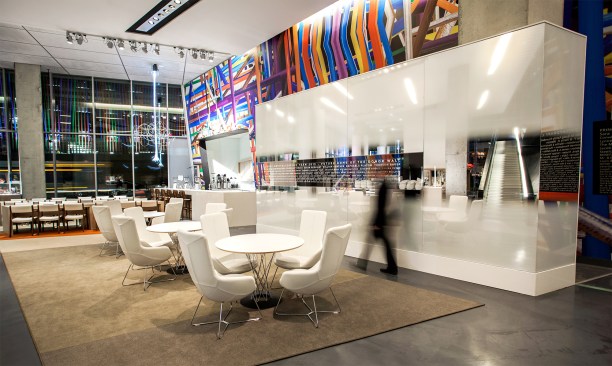
The renovated lobby, with local artist Matt Kotlarczyk's chandelier
Nothing builds on Hadid’s spare, abstract aesthetic, which, though robust, is strangely fragile. The interventions were intended to be artistic rather than architectural, presumably so as not to compete with Hadid’s mother ship, but distinctions blur without coalescing into a whole. It’s a museum yard sale that undercuts a visitor’s confidence in the judgment of the administrators.
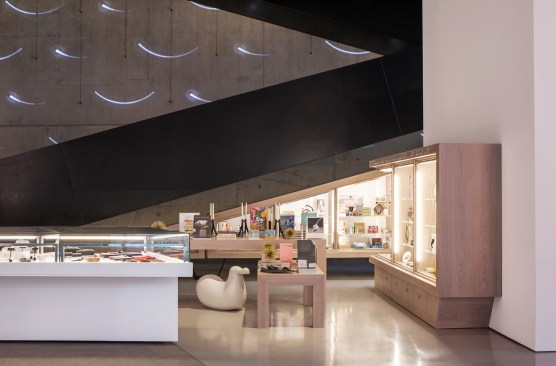
Courtesy FRCH
The new store
The unfortunate turn of events raises an issue of historically important contemporary buildings: Who owns them? At a certain point an architect hands over the keys to the client, but a moral imperative pertaining to the building’s authorship and artistic copyright should live on, especially if the building has achieved national prominence for its design. The directors of this non-collecting museum should have handled their only permanent work of art—the building itself—with curatorial respect.
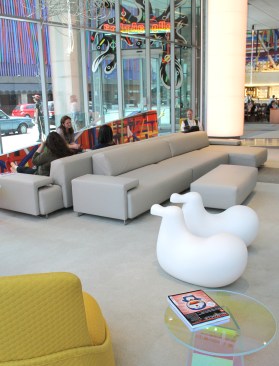
Courtesy FRCH
The new lounge area in the lobby
Fortunately, the damage is reversible, if expensive to undo: the art installations are not permanent, and the restaurant and café can be redesigned, perhaps according to Hadid’s original plans. Platow wrote that “We absolutely would welcome a future iteration with Zaha’s input.”
The museum plans to recast the space in about a year, so in the meantime, one hopes that the administrators seriously consider how they might restore the lobby’s original integrity. They can start by giving Hadid a call.
